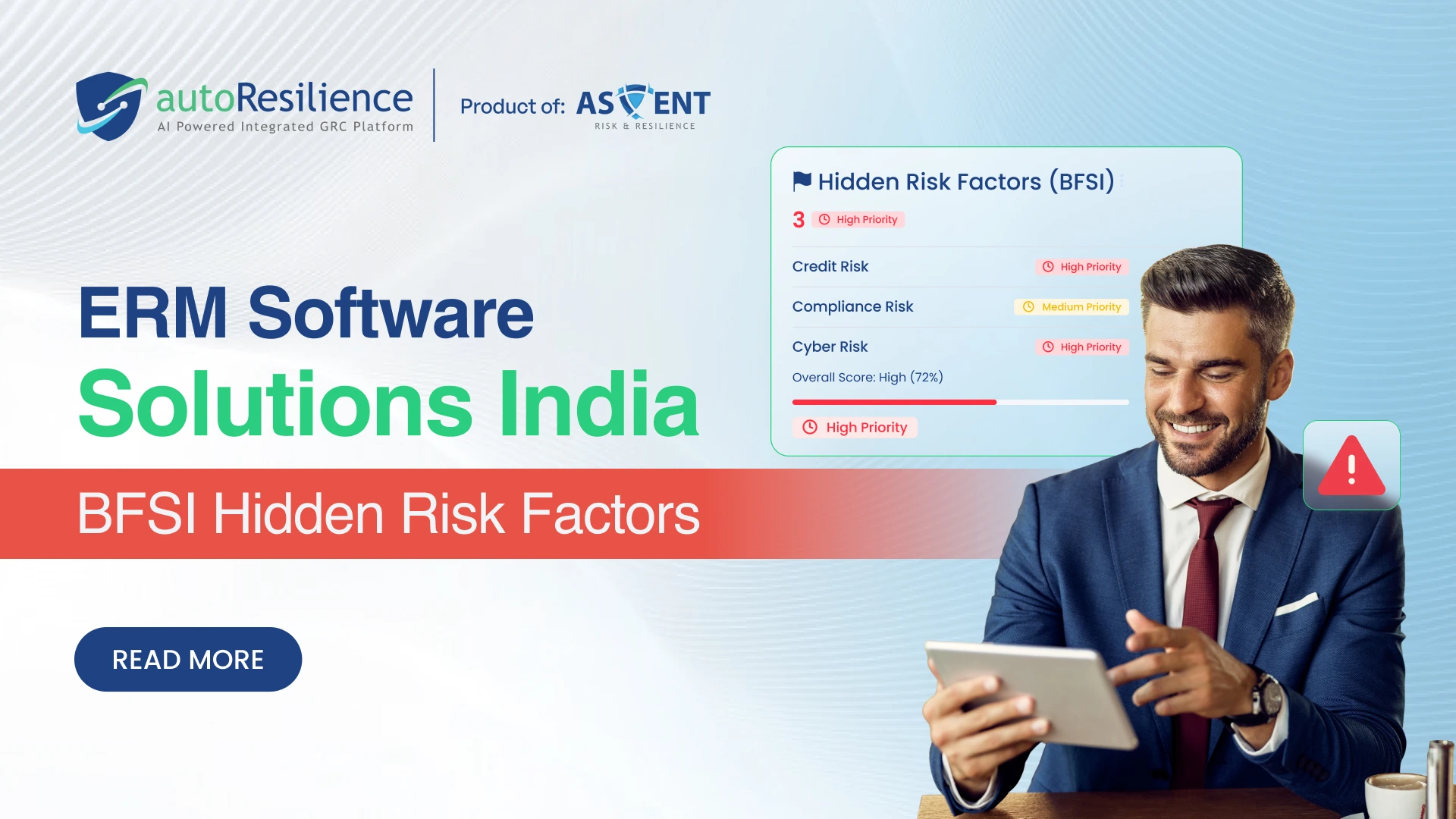
ERM Software Solutions India: BFSI Hidden Risk Factors
Why ERM in BFSI Needs a Reality Check In India’s Banking, Financial Services, and Insurance (BFSI) sector, ERM Software Solutions India have become essential for managing complex risks...

Why ERM in BFSI Needs a Reality Check In India’s Banking, Financial Services, and Insurance (BFSI) sector, ERM Software Solutions India have become essential for managing complex risks...
In India’s Banking, Financial Services, and Insurance (BFSI) sector, ERM Software Solutions India have become essential for managing complex risks. Boards rely on dashboards, risk committees review appetite frameworks, and regulators demand compliance.
Yet, despite these efforts, BFSI firms continue to face unexpected credit losses, digital fraud, and regulatory penalties. The challenge lies in hidden risk factors that weaken ERM effectiveness.
The solution? Strengthening governance and resilience through smarter, software-driven risk management tailored for BFSI institutions in India.
Even with established structures, governance weaknesses persist:
Solution: Translate risk appetite into quantifiable KRIs and invest in Board training on emerging risks.
However, without integrating dashboards and KRIs into ERM Software Solutions India, BFSI institutions struggle to translate governance policies into actionable insights.
Data and model issues often undermine risk insights:
Solution: Deploy a Model Risk Management framework with independent validation and stability monitoring.
Vendor and fintech dependencies introduce systemic vulnerabilities:
Solution: Establish a Third-Party Risk Office, map dependencies, and set concentration limits.
Fraud risk evolves alongside digital adoption:
Solution: Use behavioral analytics, device fingerprinting, and velocity controls for fraud prevention.
BCP and DR plans often exist on paper but fail in practice:
Solution: Define Important Business Services (IBS), set tolerances, and conduct live failover tests.
With RBI, SEBI, IRDAI, and others, regulatory compliance often becomes a tick-box exercise:
Solution: Use a Regulatory Control Tower with automated reporting aligned to actual risk controls.
Traditional dashboards don’t always reflect reality:
Solution: Integrate financial impact and trend analysis into KRIs and track risk-adjusted profitability.
Climate-linked risks increasingly affect BFSI exposures:
Solution: Overlay geospatial climate data into underwriting and perform stress testing.
Large transformation programs can introduce new vulnerabilities:
Solution: Manage technology modernization as a risk-controlled transformation program.
Human factors remain critical but under-addressed:
Solution: Map key-person risks, enforce dual controls, and automate repetitive tasks.
1. What is ERM in BFSI?
ERM in BFSI refers to the structured approach of identifying and managing risks across banking, insurance, and financial services operations. Learn more about our Risk Management Software Solutions.
2. Why do ERM frameworks fail in Indian BFSI institutions?
Because of hidden risks such as vendor dependencies, governance weaknesses, outdated models, and regulatory overload.
3. How can BFSI firms prevent fraud risks?
By using behavioral analytics, device risk assessments, and real-time transaction monitoring. Explore our Fraud Risk Solutions.
4. What role does technology play in ERM?
Software Solutions like autoResilience strengthen ERM by automating risk controls, monitoring, and reporting. Visit our Software Overview.
5. Where can I learn more about operational resilience in BFSI?
Refer to RBI’s official circulars and our Operational Risk Insights.
In India’s BFSI sector, ERM effectiveness goes beyond compliance. Institutions that adopt ERM Software Solutions India to close governance gaps, strengthen resilience, and modernize risk monitoring gain long-term trust and profitability.
Next Step: Book a Demo today to see how autoResilience can transform ERM for your institution.